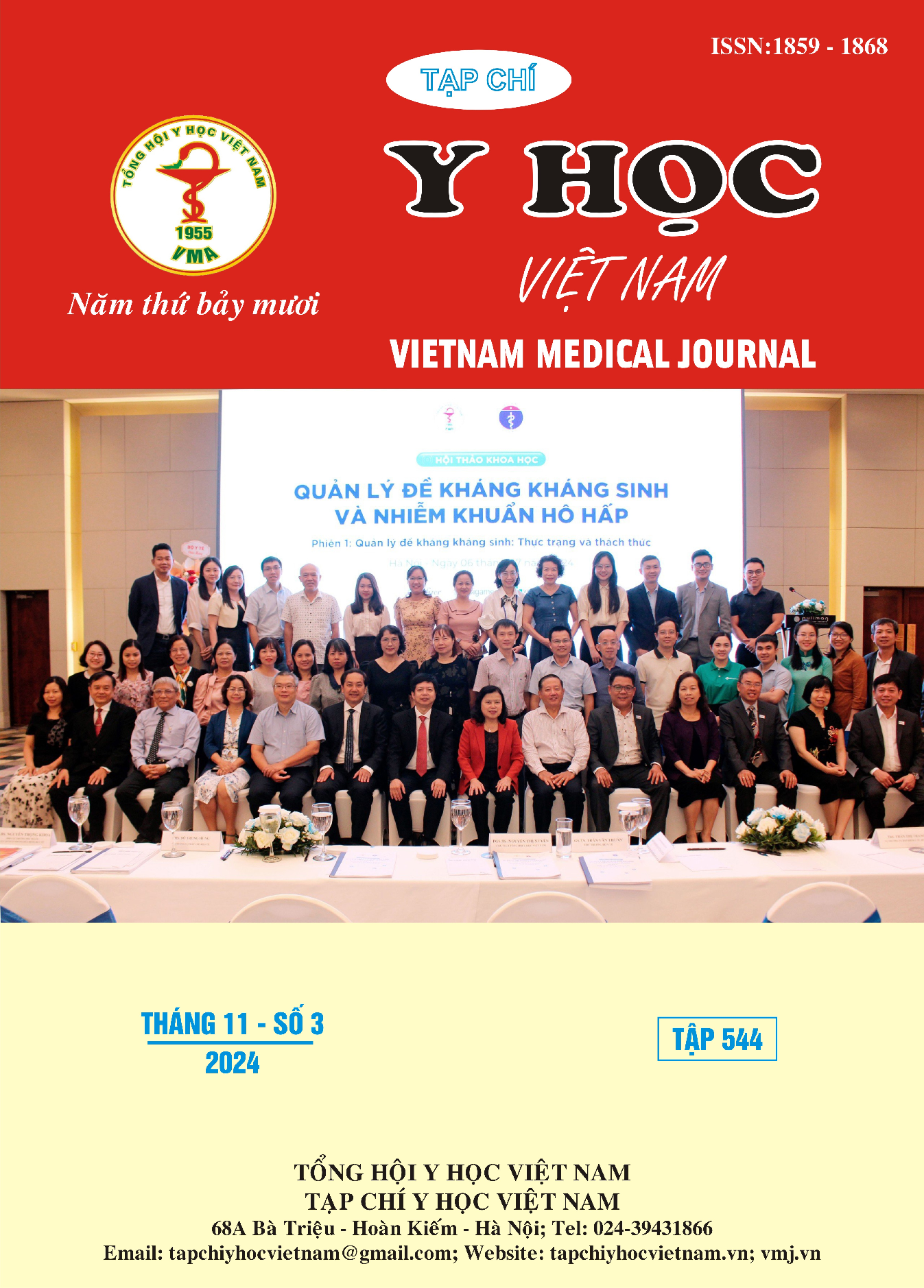KHẢO SÁT ĐAU DO NGUYÊN NHÂN THẦN KINH BẰNG THANG ĐIỂM PAINDETECT Ở BỆNH NHÂN LOÃNG XƯƠNG NGUYÊN PHÁT
Nội dung chính của bài viết
Tóm tắt
Mục tiêu: Mô tả đặc điểm lâm sàng, Xquang và đặc điểm đau do nguyên nhân thần kinh theo thang điểm PainDetect ở bệnh nhân loãng xương nguyên phát. Đối tượng nghiên cứu: 120 bệnh nhân được chẩn đoán loãng xương nguyên phát có đau cột sống với thang điểm đau VAS ≥ 3 điểm đang điều trị tại Trung tâm Cơ Xương Khớp và phòng khám ngoại trú bệnh viện Bạch Mai từ tháng 7 năm 2023 đến tháng 9 năm 2024. Phương pháp nghiên cứu: Mô tả cắt ngang. Kết quả: 1. Đặc điểm lâm sàng:Tuổi trung bình của đối tượng nghiên cứu là 72,07±8,75 (năm),trong đó bệnh nhân có tuổi ≥ 70 (năm) chiếm tỷ lệ cao 60,8%. Bệnh nhân nữ chiếm tỷ lệ 91,7%. Triệu chứng lâm sàng hay gặp: đau cột sống (100%), hạn chế vận động cột sống (62,5%), biến dạng cột sống (28,3%). 2. Đặc điểm Xquang cột sống: Tỷ lệ bệnh nhân lún xẹp≥ 2 đốt sống là 52,1%. 3. Đặc điểm đau do nguyên nhân thần kinh: Tỷ lệ bệnh nhân có triệu chứng đau cột sống do nguyên nhân thần kinh theo thang điểm PainDetect là 10,8% và tỷ lệ bệnh nhân đau gợi ý do nguyên nhân thần kinh là 8,4%. Triệu chứng đau thần kinh theo thang điểm PainDetect: đau tăng khi kích thích (52,5%), cảm giác kim châm (42,5%), đau như bị điện giật (50%). Kết luận: Tỷ lệ bệnh nhân có triệu chứng đau cột sống do nguyên nhân thần kinh theo thang điểm PainDetect là 10,8%. Các đặc điểm đau thần kinh thường gặp là: đau tăng khi kích thích (52,5%), cảm giác kim châm (42,5%), đau như bị điện giật (50%).
Chi tiết bài viết
Từ khóa
Loãng xương nguyên phát, đau thần kinh, Paindetect
Tài liệu tham khảo
2. Ho-Pham LT, Nguyen UDT, Pham HN, Nguyen ND, Nguyen TV. Reference ranges for bone mineral density and prevalence of osteoporosis in Vietnamese men and women. BMC Musculoskelet Disord. 2011;12:182. doi:10.1186/1471-2474-12-182
3. Mattia C, Coluzzi F, Celidonio L, Vellucci R. Bone pain mechanism in osteoporosis: a narrative review. Clin Cases Miner Bone Metab. 2016;13(2): 97-100. doi:10.11138/ccmbm/ 2016.13.2.097
4. Freynhagen R, Baron R, Gockel U, Tölle TR. painDETECT: a new screening questionnaire to identify neuropathic components in patients with back pain. Curr Med Res Opin. 2006;22(10):1911-1920. doi:10.1185/030079906X132488
5. Moretti A, Liguori S, Paoletta M, et al. Characterization of neuropathic component of back pain in patients with osteoporotic vertebral fractures. Neuro Rehabilitation.2022;51(2):325-331. doi:10.3233/NRE-220040
6. Ngô Thị Thục Nhàn. Đánh giá đau do thần kinh nguyên nhân thần kinh và một số yếu tố liên quan ở bệnh nhân loãng xương nguyên phát bằng thang điểm LANSS. Tạp chí y học Việt Nam. 2023: 187-194
7. Thao Nguyen Thi Phuong. Đánh giá chất lượng cuộc sống của bệnh nhân cao tuổi loãng xương nguyên phát không có gãy xương ngoài cột sống điều trị tại bệnh viện lão khoa trung ương. Published online 2019.
8. Chou YC, Shih CC, Lin JG, Chen TL, Liao CC. Low back pain associated with sociodemographic factors, lifestyle and osteoporosis: a population-based study. J Rehabil Med. 2013;45(1):76-80. doi:10.2340/16501977-1070


